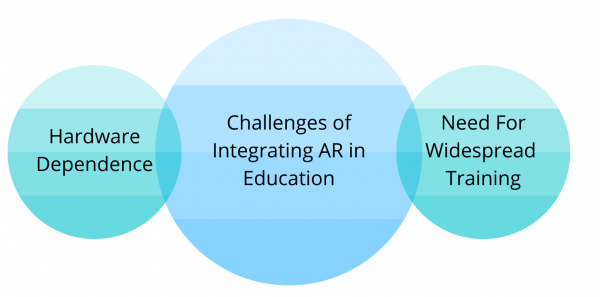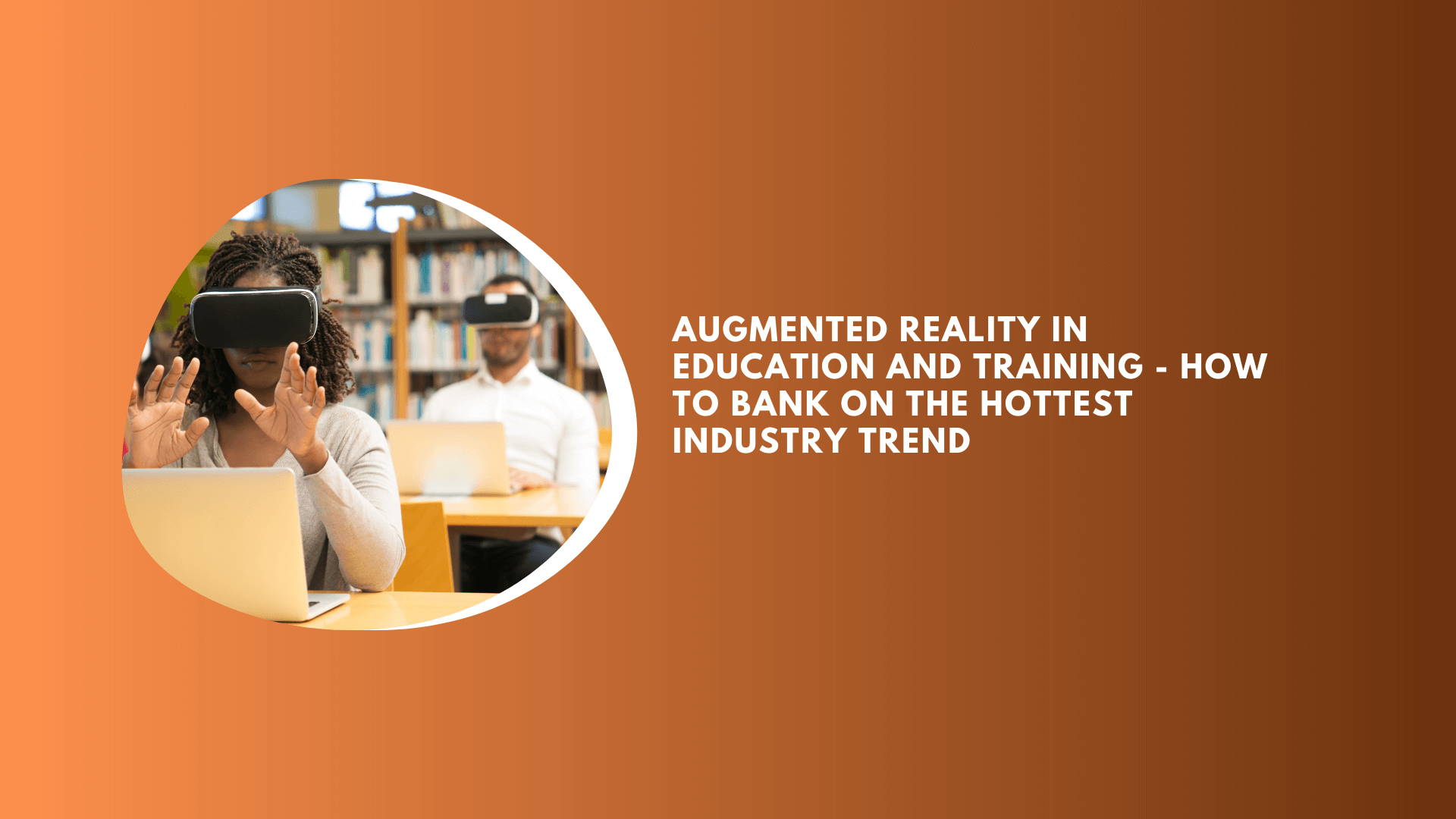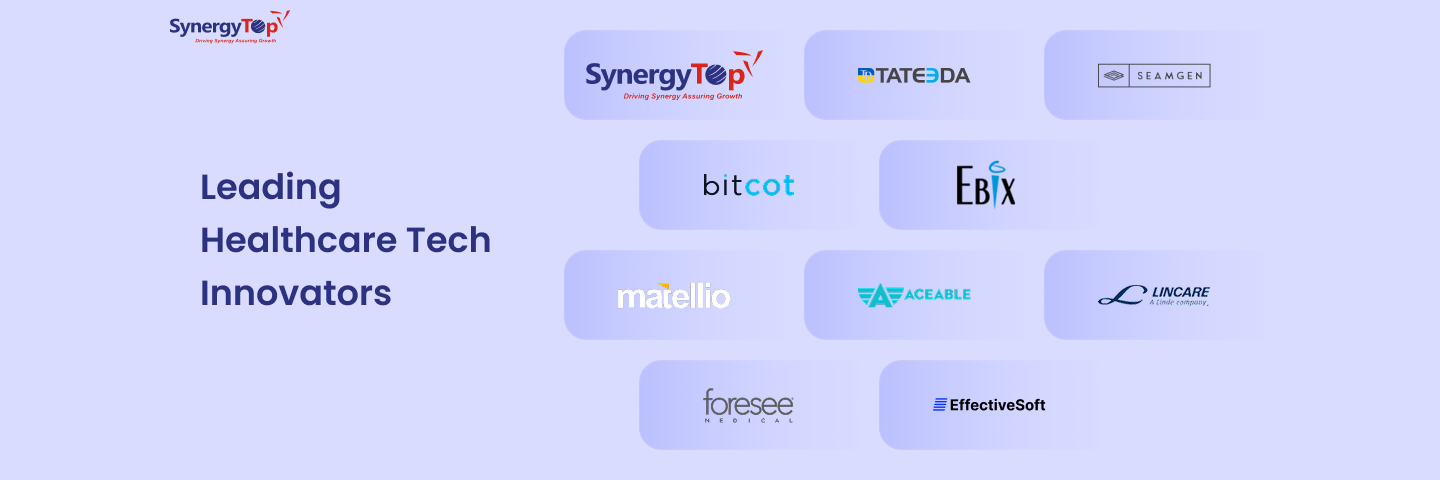Traditional learning and training methods are fast being overridden by new-age technological tools. Technology has changed the face of the education industry, for the better. And the pandemic has hastened the process of the shift to digital, tech-backed modes of education.
A Global News Wire report suggests that the Education Technology (abbreviated as EdTech) industry will hit the $680 billion mark by 2027 with an annual growth rate of 17.9%.
And in this new normal of the 21st century, Augment Reality is the hottest trend in the EdTech industry. If predictions from ABI Research are to be believed, by 2023, the value of AR in EdTech will be over $5.3 billion.
What is Augmented Reality?
Augmented reality (AR) is an interactive experience of a real-world environment where the objects that reside in the real world are enhanced by computer-generated perceptual information, sometimes across multiple sensory modalities, including visual, auditory, haptic, somatosensory and olfactory. AR can be defined as a system that incorporates three basic features: a combination of real and virtual worlds, real-time interaction, and accurate 3D registration of virtual and real objects.
[Source: Wikipedia]
This opens up significant opportunities for educational institutions and businesses to leverage AR in education and training.
Are you ready to leverage the power of AR to skyrocket your EdTech project?
We have the guide you need!
In this piece, I will walk you through fresh ideas and offer expert advice on how you can use Augmented Reality for learning and training-based solution.
Read on.
Why Use Augmented Reality in Education?
Before we discuss how to use Augmented Reality in Education, it is important to understand why the use of AR in education is so important today.
The top advantages of using AR in Education include:
- AR has the potential to offer a combined mode of learning where the traditional textbook methods of teaching are complemented by the latest technological solutions.
- With the use of audio and visual methods of teaching, AR helps students grasp the concepts in a better way and learn and understand more.
- Through AR-enabled smart classes, students can engage in interactive learning and even think out of the box.
- 3D models and interactive illustrations made possible using AR help learners grasp complex concepts with ease and get a practical view of things
- To access AR-based learning, learners only need an Internet-connected Smartphone with the required learning app installed on it. This significantly reduces the cost of education and makes it more accessible for people with limited resources.
- AR has been increasing used for offering safe and efficient workplace training. For example, AR can help professionals practice heart surgery and operate space shuttles without endangering others or spending millions of dollars.
Challenges of Using Augmented Reality in Education
While the benefits of AR in education are many, it also has some challenges that have to be tackled first. Two key challenges of integrating AR in EdTech include –

- Need for Widespread Training – Teachers, educators, and instructors across industries do not have the necessary background training that can help them maximize the potential of AR-enabled EdTech solutions. Training is the first step to helping people leverage the potential of AR.
- Hardware Dependence – To be able to use augmented in classrooms and corporate training sessions, it is important that all participants have access to smartphones capable of supporting AR applications.
Both these challenges can be tackled by creating awareness for AR and rolling out AR-enabled solutions for a multiplicity of device types.
Augmented Reality in Education – Actionable Use Cases for Businesses
Contrary to popular belief, AR can help you do more than use Snapchat filters and chase Pokémon on the streets.
Here are 6 outstanding applications of Augmented Reality that have the potential to revolutionize education:
1. AR apps for kids
It is known to all that the youngest members of our society, kids between 2-5 years of age are among the most eager adopters of technology. With Augmented Reality applications, you can help them learn to read, write, and communicate better while making a fortune for yourself.
For example, take the case of Disney Research’s Augmented Creativity Platform. With mobile phones becoming widely accessible physical coloring books seem to have lost their charm. But with Disney’s AR-enabled digital coloring books, the gap between the real and the digital world gets bridged. And of course, the experience is more engaging and entertaining for tiny tots.
Such applications can be launched for Android and iOS applications to generate ad as well as subscription-based revenue. Also, Gamification can offer further advantages in promoting and popularizing such apps. After all, 68% users have reported that gamified courses are more motivational than their traditional counterparts.
2. Augmented reality in the classroom
Imagine studying the human skeletal system with a skeleton in front of you. Or you could see the flow of blood in human body. How about seeing the heart pump blood in front of your eyes? Sounds fun, right? But all of this is not really possible. Unless of course, you use interactive 3D models using AR technology.
And it is not just human anatomy, but also chemical reactions, laws of physics, geometrical shapes, the solar system and the entire universe and even geography and map work that can come to life with augmented reality.
Along with Smart Classes and full-screen projectors, AR can be used to include 3D model and real-life systems in classroom learning.
For example, Google Expeditions, lets users see 3D models of volcanoes, storms, DNA, and go on over 100 other AR expeditions in the classroom for interactive learning. It offers learners a perfect way to see the concepts they are studying about in live action.
3. Distance learning
With the pandemic forcing us to stay within our homes and active globalization, AR can be used to promote remote and distance learning. Apps that help users learn in a real-like environment are much in demand.
AR can be used to create learning applications and solutions that offer a real-like experience virtually. Imagine sitting comfortably on your bed and feeling like you are attending sessions of educators from top institutions across the globe. A wonderful experience, isn’t it? And that’s possible with the power of AR.
With apps like Unite AR, educators can easily live stream AR experiences (in the form of 3D images and AR-enabled videos) on online meeting applications like Google Meet and others.
4. Virtual showcasing of real-life experience
AR-backed marketing efforts, primarily in the form of educational institutions offering virtual campus tours are on the rise. By using AR to help potential students experience life on campus, institutions can expect better enrollment rates.
Harvard is one of the top colleges offering Harvard from Home virtual campus tour experiences to prospective students. And there are many other colleges that have also come with virtual campus tour options, especially after the pandemic.
5. AR for museums
For a generation that craves interactivity, AR technology can be used in museums to make sculptures, artifacts, and paintings interactive and more information-rich. With AR-enhanced tours, the user engagement rates in museums can rise. This also helps improve cultural and heritage education among the youth.
One example of AR in action can be seen in action at the Muséum national d’Histoire naturelle in Paris, which is using Microsoft’s Hololens for their project called REVERIE which lets visitors come face-to-face with digital versions of extinct animals.
6. AR for corporate learning
Today, most professional skills have an average shelf-life of 5 years. This means professionals and organizations both need to focus on re-education and skill enhancement. This stands true for corporate as well as government organizations.
AR has proved to be effective in imparting safe and efficient medical, military, space technology, and manufacturing training. Real-world training in these sectors is not just costly but also risky. With AR, candidates can get hands-on experience without the inherent risks or costs of real training.
In fact, NASA is testing Hololens in its project Sidekick which has the potential to provide virtual illustrations and instructions that can be used in crew training.
There is also a lot of potential for organization-specific solutions that help keep professionals up-to-date with the latest industry skills while ensuring an interactive learning experience.
AR-backed learning solutions in the corporate sector also help towards fostering cultural inclusivity.
AR Development in Education: Bank On the Hottest Trend Today or Lose
As we have now seen, AR has vast, untapped potential in the field of education. Market bigshots have also entered the AR market with their AR-enabled devices like Google Glasses and Facebook’s Oculus Quest.
Moreover, with ever-increasing mobile adoption rates and recent advancements in mass-use hardware, AR is becoming more accessible and its user base is expanding exponentially. Now is the right time to enter the market with your own AR-powered EdTech solution.
Have an idea? Discuss it with the team of experts at SynergyTop to get your project off the ground soon.
About SynergyTop
SynergyTop is a San Diego-based digital commerce company offering bespoke mobile, web, and E-commerce development solutions. We have experts with skills and experience in using new-age technologies like augmented reality, virtual reality, artificial intelligence, machine learning, blockchain, and more.
Take the first step towards getting your AR solution developed by contacting us at contact@synergytop.com today!
















